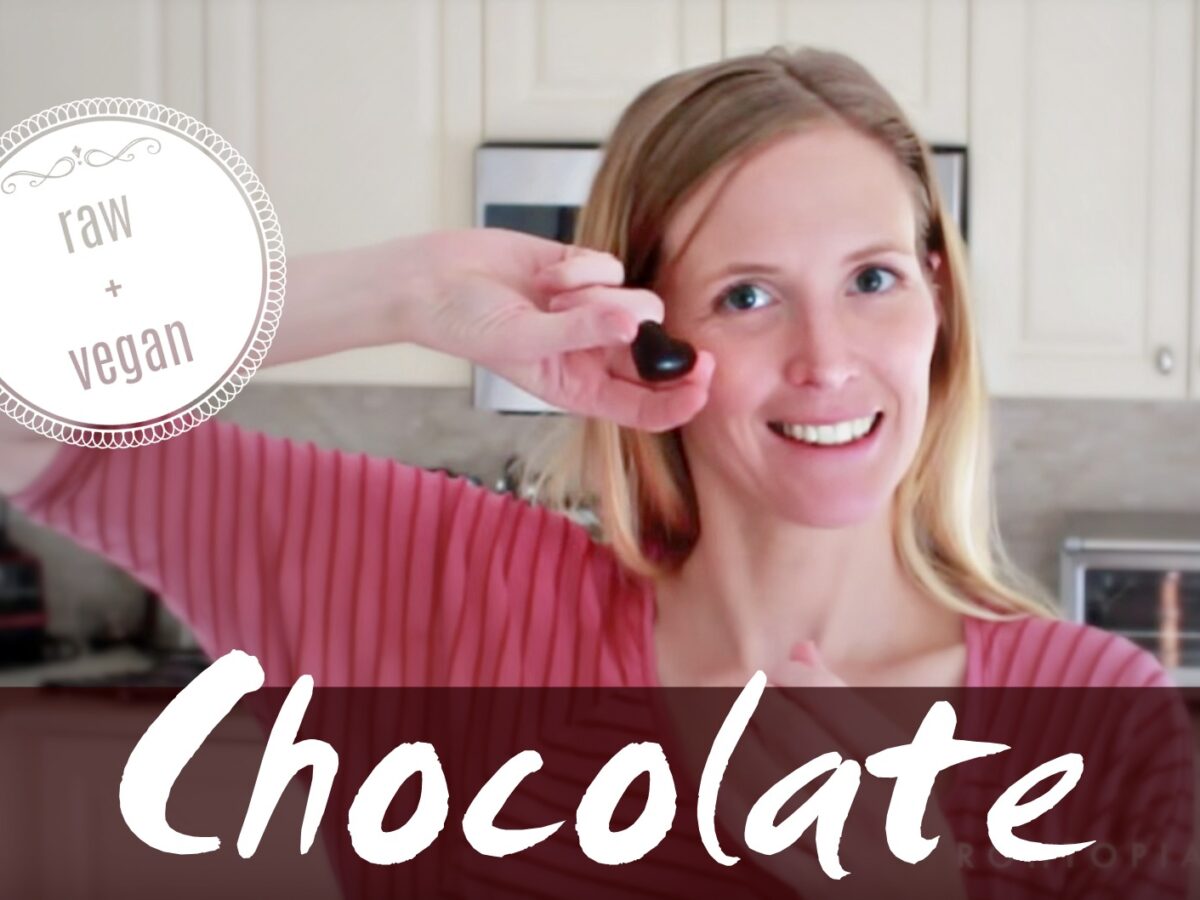Is there a season fo chocolate? Of course, autumn, winter, spring and summer. Is there a perfect time for chocolate? Yes – now!
This recipe is for raw vegan chocolate with cacao paste, also known as cacao liqueur.
Cacao paste is the purest form of chocolate. It is made from peeled and ground cacao beans, and if you are after 100% chocolate, this is exactly it. Otherwise, add a bit of liquid sweetener of choice, plus some cacao butter or coconut oil.
Cacao butter will make the chocolate harder and allows it to stay solid at warmer temperatures, coconut oil softens the chocolate but will also let it melt at room temperature – it’s best stored in the fridge.
You can also add some sea salt to bring out the chocolate flavour even better.
The preparation does not take long at all, and it totally worth it – I like it so much, I cannot imagine anyone ever going back to regular chocolate and truly preferring it, but instead would take 20 minutes every once in a while, make their own chocolate, sweeten it to taste and pour it in shapes as they please.
RECIPE FOR RAW VEGAN CHOCOLATE WITH CACAO PASTE
Ingredients:
125g cacao paste – around 1/2 a cup
50g cacao butter or coconut oil – around 1/4 cup or 4 TBSP
2-3 TBSP coconut blossom nectar
1/2 vanilla bean, or 1/2 tsp extract
1 pinch sea salt
Add-ons: cacao nibs, nuts, dried fruit, edible flowers
How to make chocolate with cacao paste:
Chop the cacao paste and cacao butter and place into a metal bowl or pot to melt over steaming water. Another way is to use a dehydrator. This will take a bit longer, but opens up time for you to do other things – yoga, vacuuming, home work, sending out love notes, etc.
Once melted, stir together with the remaining ingredients and pouring the ready chocolate in silicone mould or any deep-ish dish.
Add-Ons: Sprinkle with cacao nibs, flowers, nuts or dried fruit such as raisins, goji berries, almonds, chopped hazelnuts or walnuts.
Let the chocolate cool down to room temperature before placing it in the fridge or freezer to fully solidify.
If you put it in there straight away, the oils tend to separate, leaving you with chocolate with a white layer on top.
Notes:
* Use coconut blossom nectar or another liquid sweetener such as rice syrup, agave, maple syrup. Date paste, honey and stevia do not work well for this recipe.
C = cup, 240 ml
1/2 C = half a cup, 120 ml or / TBSP
1/4 C = quarter of a cup, 60 ml or 4 TBSP
TBSP = table spoon, 15 ml or 3 tsp
tsp = tea spoon, 5 ml
“soft dates” = medjool are usually best. If necessary, soak briefly and drain. The soaking water is super sweet by the way!






